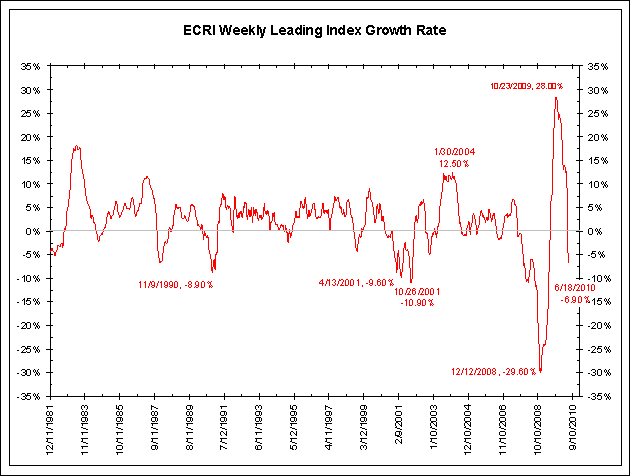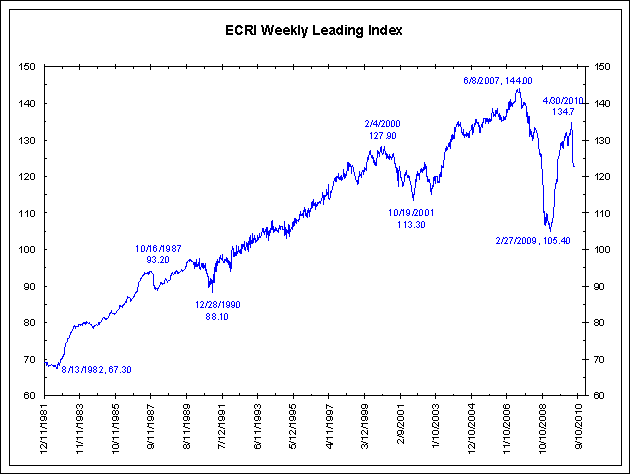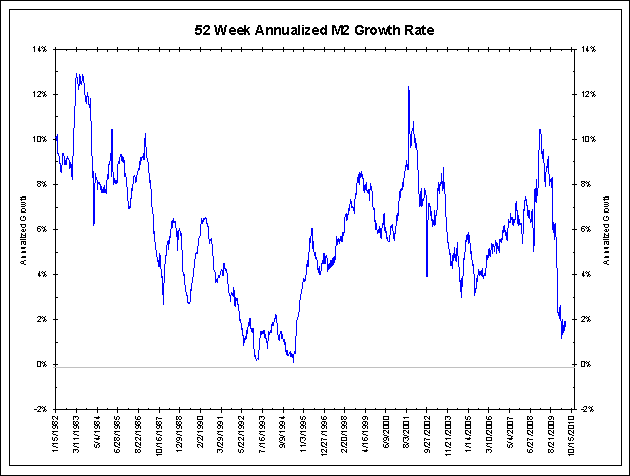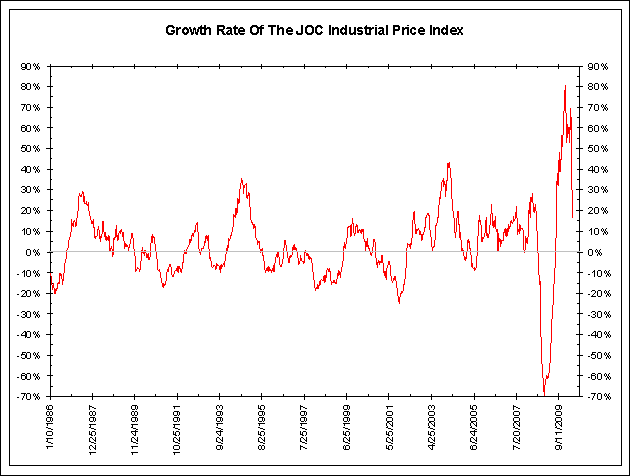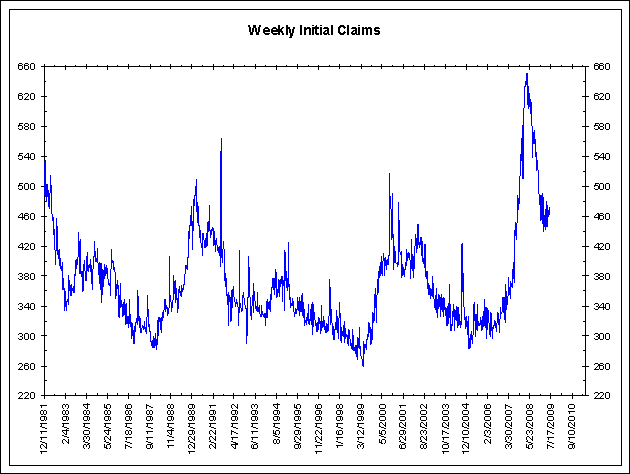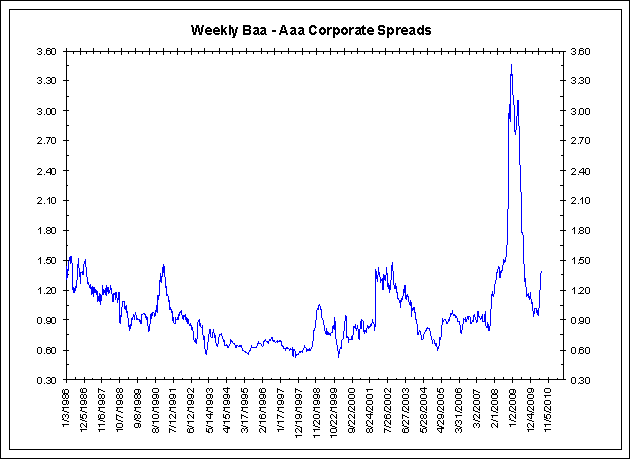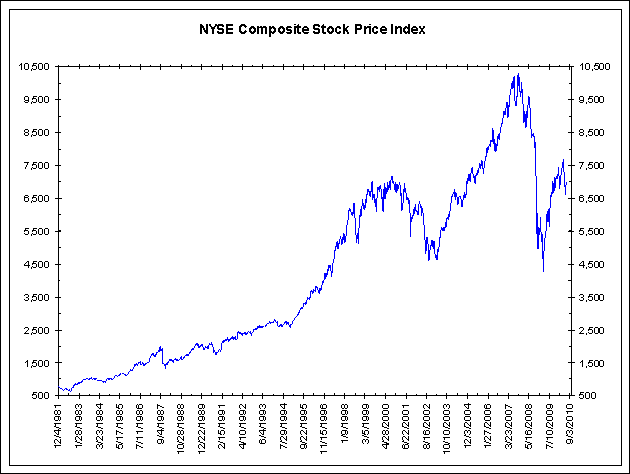On Friday the ECRI reported a -6.9% annualized growth rate for its Weekly Leading Index (WLI) in the week ending June 18, 2010. As this marks the third week in a row of a declining growth rate, the index is garnering much attention.
<Click on chart for larger image>
<Click on chart for larger image>
Should We Care?
This index, which has been published every Friday for decades, is viewed as a very good leading indicator of future economic activity. However, it is not without its critics.
Bank of America panned this index in a June 22 commentary. As we further discussed in a Market Facts on Wednesday, although the ECRI is constructed of multiple components, one need look no further than last week’s stock prices to get a general idea of where this index is heading. But, given its great reputation and track record, if the ECRI is telling us the economy is stumbling, we need to pay attention.
The ECRI offers its rebuttal to some of these critiques in the commentary below.
- The Big Picture- ECRI Weekly Leading Indicators Widely Misunderstood
The following discussion is by Lakshman Achuthan and Anirvan Banerji, co-founders of ECRI:
There’s been much attention to our work of late, culminating in a report this Tuesday from Bank of America listing several critiques of our Weekly Leading Index (WLI). Apparently, the clinching argument is that “If a single indicator always accurately predicted the trajectory of the economy, the demand for Wall Street economists would be significantly reduced.” To some Wall Street economists, it may seem self-evident that there should be strong demand for their views. But this is not at all clear to us as far as their recession-forecasting function is concerned. After all, a 63-country IMF study on economists’ recession-forecasting prowess concluded that “The record of failure to predict recessions is virtually unblemished.” In contrast, the IMF subsequently noted that ECRI “has actually had a very stellar record” of recession forecasting. As we outlined in our 2004 book, Beating the Business Cycle, there is no Holy Grail of economic forecasting, even among our large array of state-of-the-art leading indexes, of which the WLI is but one. It seems that many of the self-styled experts on the WLI either haven’t read the book, or simply don’t understand the parts of the book where we repeatedly state, in no uncertain terms, that ECRI does not use models. So it is with economists who cannot imagine that ECRI’s leading indexes are not model-driven or based on back-fitting of data. Thus the BofA report notes that “the ECRI (sic) and other leading indexes . . . fit the business cycle better ex post than ex ante” and that “This is an example of a broader issue in all statistical models of the economy. The data fit much better in-sample than out-of-sample.” They just don’t get it. While this may be a valid criticism of statistical models of the economy, ECRI’s leading indexes are not, in any sense, statistical models of the economy.
How Is It Constructed?
The ECRI keeps the exact construction of the index proprietary. That said, we believe it uses seven components in its computations. They include:
- The Mortgage Bankers Association’s home purchase index
- Weekly Money Supply ( Growth rate of M2 plus Long-Term Household Mutual Funds)
- JOC-ECRI Industrial Price Index, Growth Rate
- Initial jobless claims
- Corporate Yield Spreads
- Corporate Bond Quality Spreads
- NYSE Composite Stock Price Index
Below is a collection of charts of each component. (Please note: Some of the indexes shown below are not the exact index mentioned in the Bank of America commentary, however they are very similar).
You will note that many of these components have turned lower in recent weeks (or wider in the case of corporate spreads).
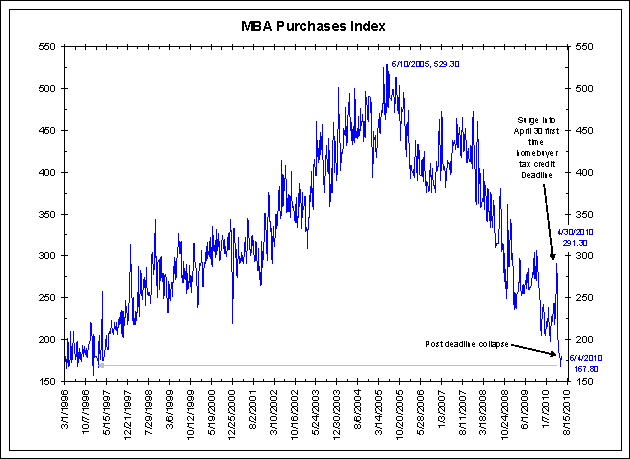
<Click on chart for larger image>
<Click on chart for larger image>
<Click on chart for larger image>
<Click on chart for larger image>
<Click on chart for larger image>
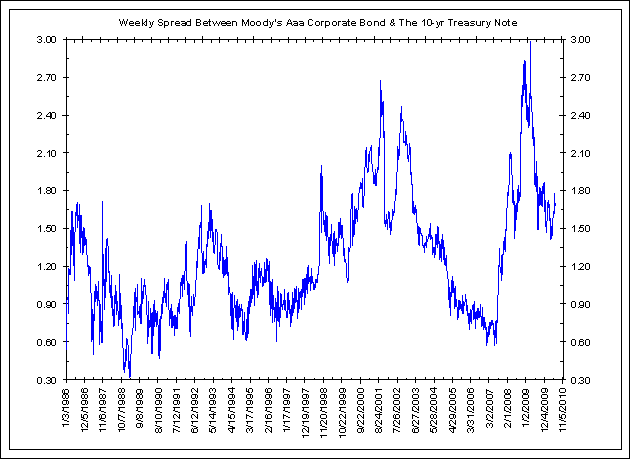
<Click on chart for larger image>
<Click on chart for larger image>
